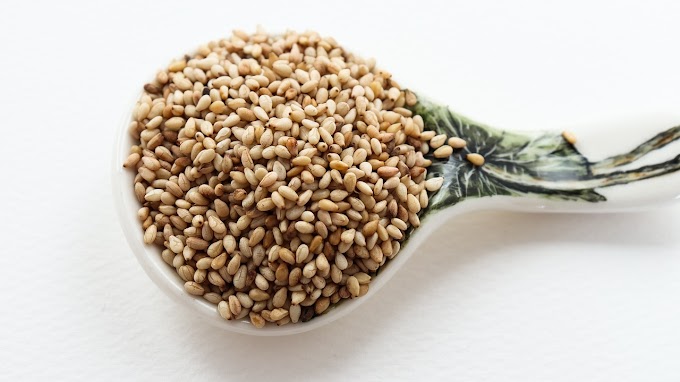Breathing Techniques for Running
Introduction
Running stands as a widely embraced form of exercise, not only fostering physical fitness but also nurturing mental well-being. While a runner dedicates attention to training, form, and endurance, the often-overlooked aspect of optimal performance lies in the realm of proper breathing techniques. This discourse delves into the pivotal role of breathing strategies in running and examines a spectrum of techniques aimed at elevating the running experience through the refinement of breathing practices.

Perks of Breath Mastery in Running
1. Oxygen Amplification: By integrating adept breathing techniques into your running regimen, a consistent surge of oxygen is delivered to muscles, mitigating premature fatigue and fortifying overall endurance.
2. Augmented Stamina: The systematic application of fitting breathing methods can wield a profound influence on endurance levels. A measured and rhythmic breathing approach alleviates strain on the respiratory system, facilitating extended runs without succumbing to breathlessness.
3. Enriched Focus and Awareness: The cultivation of mindful breathing during running acts as a catalyst for heightened focus and mental clarity. Directing attention to your breath keeps you anchored in the present moment, a catalyst for enhanced running performance and the ability to maintain a steadfast pace.
Essential Breathing Modalities for Runners
1. Diaphragmatic Respiration: Also acknowledged as abdominal breathing, this technique entails expanding your abdomen to intake more air. To hone this method, position one hand on your chest and the other on your abdomen. Inhale deeply through your nose, allowing your abdomen to rise, and then exhale slowly through your mouth.
2. Breath Cadence: The breath cadence involves synchronizing your breath with your strides. Inhale for three steps and exhale for two steps. This technique harmonizes your breath with your running cadence, promoting superior oxygen exchange and reducing the risk of cramps.
3. Cubic Respiration: A straightforward technique encompassing inhalation, breath retention, exhalation, and another breath retention for equal durations. This proves instrumental in maintaining a consistent breathing pattern during various phases of your run.
4. Rhythmic Breathing: Involves aligning your breath with your cadence or steps per minute. For instance, taking two breaths for every four steps helps maintain a steady breathing pattern, conserving energy.
5. Alternate Nostril Breathing: A practice rooted in yoga and pranayama, this method involves closing one nostril and inhaling deeply through the other, then switching and exhaling through the opposite nostril. This practice balances your breath and calms the mind, ideal for pre or post-run sessions.
Preliminary Breathing Preamble
1. Deep Breaths with Elevation of Arms: Assume a tall stance and take deep breaths while raising your arms overhead. This action expands lung capacity and primes respiratory muscles for the impending run.
2. Thoracic Turns with Breath Integration: Execute thoracic turns, gently swaying from side to side while focusing on deep breathing. This mobilizes your spine and fosters thoracic flexibility, ensuring seamless breathing during the run.
3. Tall Knees Coupled with Profound Breaths: Combine lifting tall knees with deep breathing to activate core and lower body muscles. This pre-run breathing ritual enhances blood circulation and oxygen intake.
Respiratory Strategies Amidst Running
1. Nasal Breathing versus Oral Breathing: Nasal breathing serves to filter and humidify the air before it reaches your lungs, making it the preferred method for low to moderate-intensity runs. However, during high-intensity runs or when a heightened demand for oxygen arises, transitioning to oral breathing is advisable.
2. Harmonizing Breathing with Stride: As your running pace fluctuates, align your breathing rhythm with your stride. Adjusting your breath helps you maintain control and averts sensations of breathlessness.
3. Addressing Stitch and Side Cramps: If side stitches or cramps surface, concentrate on profound exhalations during foot strikes on the opposite side of the discomfort. This practice aids in alleviating discomfort and reinstating your breathing pattern.
Breathing Tailored to Diverse Running Intensities
1. Long-Distance Endeavors: During protracted runs, focus on sustaining a steady and relaxed breathing pattern. Employ diaphragmatic breathing to optimize oxygen intake and minimize fatigue.
2. Intermittent Training Interludes: In interval training, where brief bursts of high-intensity running are succeeded by periods of rest, practice controlled breathing during recovery phases to rejuvenate your breath for the subsequent sprint.
3. Sprightly Spurts: In sprints, strive for potent exhalations to generate more force and sustain your pace. Equally crucial is controlled breathing during intermissions for effective recovery.
Respiratory Recovery Post-Running
1. Cool Down with Respiratory Regimens: Following a run, allocate a few minutes to cool down with gentle breathing exercises. This aids in diminishing your heart rate and forestalling abrupt shifts in blood circulation.
2. Mindful Respiratory Meditation: Conclude your run with a mindful breathing meditation to foster relaxation and mental lucidity. Find a serene spot, sit comfortably, and concentrate on your breath for a brief duration.
Common Breathing Blunders
1. Superficial Breathing: A prevalent blunder involves shallow breathing, constraining oxygen intake, and impeding performance. Cultivate deep breathing to sidestep this pitfall.
2. Excessive Breathing: Hyperventilation or overbreathing can induce dizziness and discomfort. Maintain a measured breathing cadence to avert over-breathing during your runs.
3. Oversight of Breathing Posture: The tendency to fixate solely on stride and posture often leads runners to neglect their breathing form. Proper breathing should seamlessly integrate into your running technique.
The Role of Breath in Cognitive Perseverance
Beyond the physical advantages, adept breathing techniques contribute substantially to cognitive endurance. Training the mind to center on breath engenders mental resilience, translating into heightened running performance and excellence in various facets of life.
In Conclusion
Breathing methods tailored for running wield a transformative impact on the overall running journey. By assimilating practices such as diaphragmatic breathing, breath cadence, and cubic breathing, one can optimize oxygen supply, boost endurance, and attain heightened focus and awareness. Additionally, pre-run warm-up breathing rituals, judicious breathing during running, and post-run breathing recovery rituals all assume pivotal roles in elevating performance and ensuring a secure and gratifying run.
FAQ's
Q1: How can diaphragmatic breathing benefit my running performance?A: Diaphragmatic breathing, or abdominal breathing, enhances oxygen intake by expanding the abdomen, ensuring a steady and efficient flow of oxygen to your muscles. This can reduce the risk of early fatigue and contribute to improved overall endurance.
Q2: Is there a specific breathing pattern recommended for preventing side cramps during a run?
A: Yes, focusing on deep exhalations during foot strikes on the opposite side of the pain can help alleviate side cramps. This practice assists in restoring a regular breathing pattern and minimizing discomfort.
Q3: When is it advisable to transition from nasal breathing to oral breathing during a run?
A: Nasal breathing is preferred for low to moderate-intensity runs as it filters and humidifies the air. However, during high-intensity runs or when increased oxygen demand is present, transitioning to oral breathing is recommended to meet the heightened respiratory requirements.
Q4: How can I maintain a consistent breathing rhythm during interval training?
A: During interval training, practice controlled breathing during the recovery phases to restore your breath for the next sprint. This ensures a more effective recovery and prepares you for the succeeding high-intensity burst.
Q5: Are there specific breathing exercises for cooling down after a run?
A: Yes, incorporating gentle breathing exercises in your post-run routine can help reduce your heart rate and prevent abrupt changes in blood flow. Focus on deep, calming breaths to aid in the cooling-down process.
Q6: Can breathing techniques for running contribute to mental endurance?
A: Absolutely. Beyond the physical benefits, mastering breathing techniques contributes to mental endurance. Training your mind to stay focused on your breath fosters mental strength, translating to improved running performance and resilience in various aspects of life.
Q7: Is there an ideal breathing technique for beginners?
A: Diaphragmatic breathing, also known as abdominal breathing, is a great starting point for beginners. It involves deep inhalation through the nose, allowing the abdomen to rise, followed by a slow exhalation through the mouth. This technique establishes a foundation for effective breathing during runs.
Q8: Can breathing techniques be practiced outside of running for general well-being?
A: Absolutely. Many breathing techniques, such as mindfulness breathing and box breathing, can be incorporated into daily life to promote relaxation, reduce stress, and enhance overall well-being.
Q9: How often should I practice breathing exercises to see improvements in my running?
A: Consistency is key. Aim to incorporate breathing exercises into your routine several times a week, both during dedicated practice sessions and as part of your pre-run, during-run, and post-run rituals. Regular practice will contribute to improved breathing efficiency over time.
Q10: Are there specific breathing techniques recommended for runners with respiratory conditions?
A: Individuals with respiratory conditions should consult with healthcare professionals for personalized advice. However, many breathing techniques, when modified or practiced under guidance, can be beneficial for improving respiratory function and overall well-being. Always prioritize your health and seek professional advice when needed.









